Spanish Thyme or Cuban Oregano: Benefits, Uses and More
Spanish thyme, otherwise known as Cuban oregano and Mexican mint, is an aromatic herb belonging to the mint family. Its leaves have a strong, pungent scent and flavor that is similar to both thyme and oregano.
The Spanish thyme leaves are used to make Caribbean green seasoning, chutney, sauces, soups, and tea. Here’s more about this wonderful herb.
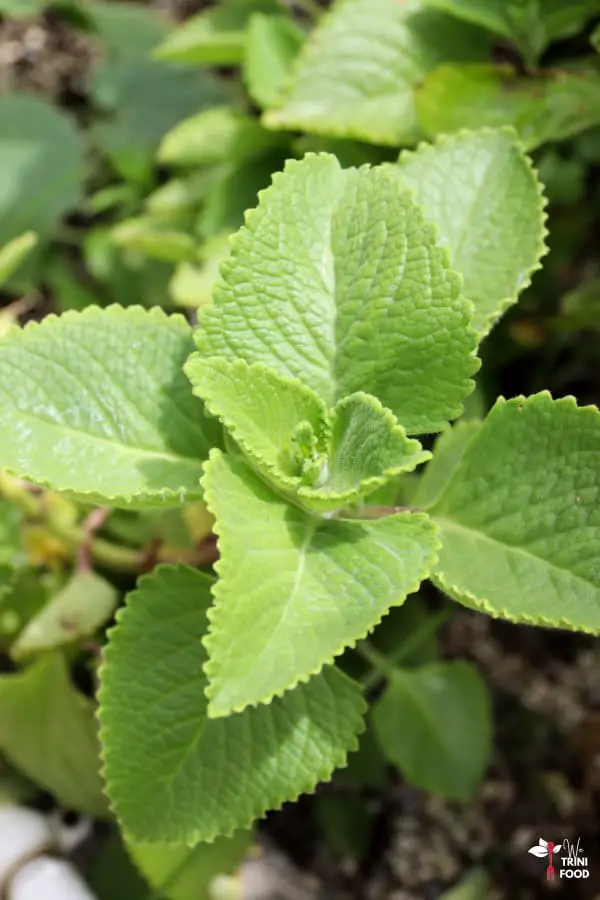
This post contains affiliate links.
Other names for Spanish thyme or Cuban oregano
Cuban oregano and Spanish thyme are the same plant with the botanical name: Coleus amboinicus (also Plectranthus amboinicus and Coleus aromaticus).
The plant has many common names including:
- Mexican mint or Indian mint
- country borage or Indian borage
- thick leaf thyme or broad leaf thyme or French thyme
- orégano brujo or Caribbean oregano
- pudina or podina
- kalabo
- sambarballi or doddapathre
Spanish thyme plant
Spanish thyme is a small aromatic perennial herb that can be classed as a semi-succulent, meaning it has thicker features and can withstand drier conditions. The plant has a soft, fleshy stem and broad, thick, ovate-shaped leaves with serrated edges. The entire plant is covered with soft, tiny, fuzzy hairs. The leaves have a strong aroma that is reminiscent of oregano and thyme.
Here’s a look at the Spanish thyme plant with those fuzzy hairs. There is also a variegated variety of the plant that has leaves with light to white edges.
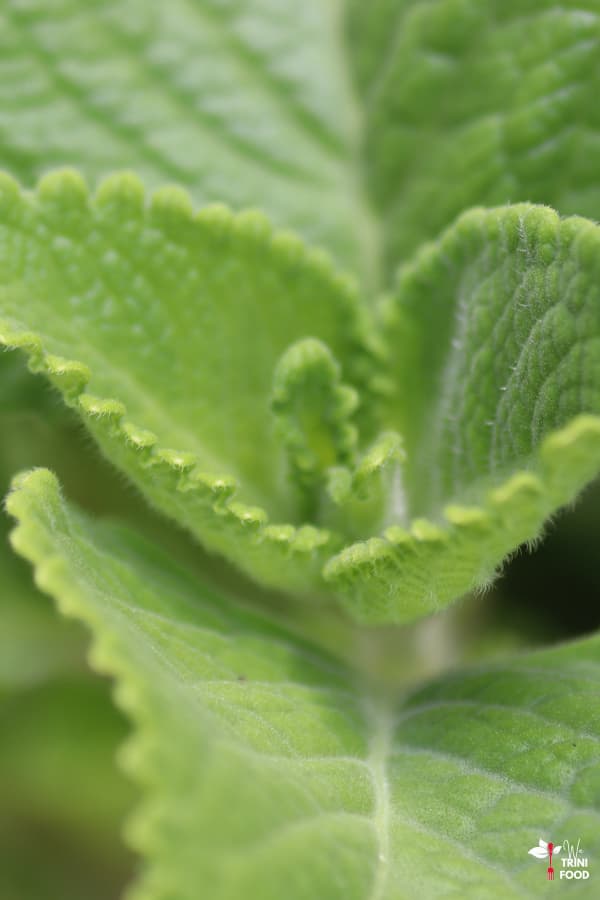
Spanish thyme vs thyme
Spanish thyme is not the same thing as common thyme or fine thyme, which has a botanical name Thymus vulgaris. Fine thyme is a dwarf aromatic plant with thin stems and very small leaves. The leaves have a strong scent and are used in many recipes. You can see how different the plant is in the photo below.
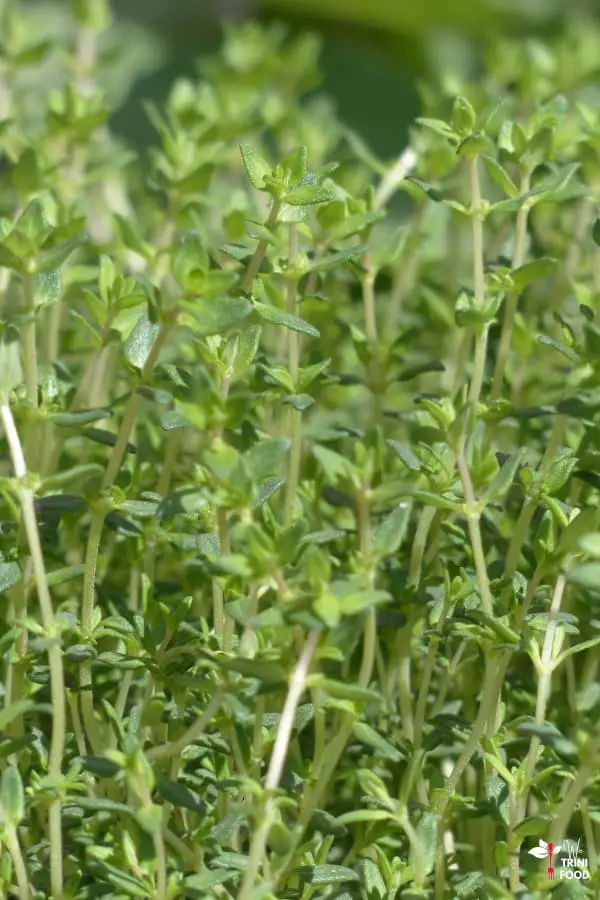
How to grow Spanish thyme
The plant is fast growing and requires little maintenance. It can grow in full sun or in shady areas. Simple fertilizers and routine watering will cause the plant to grow large, thick, dark green leaves. With less watering and care, the leaves may become smaller and slightly yellow-green in color.
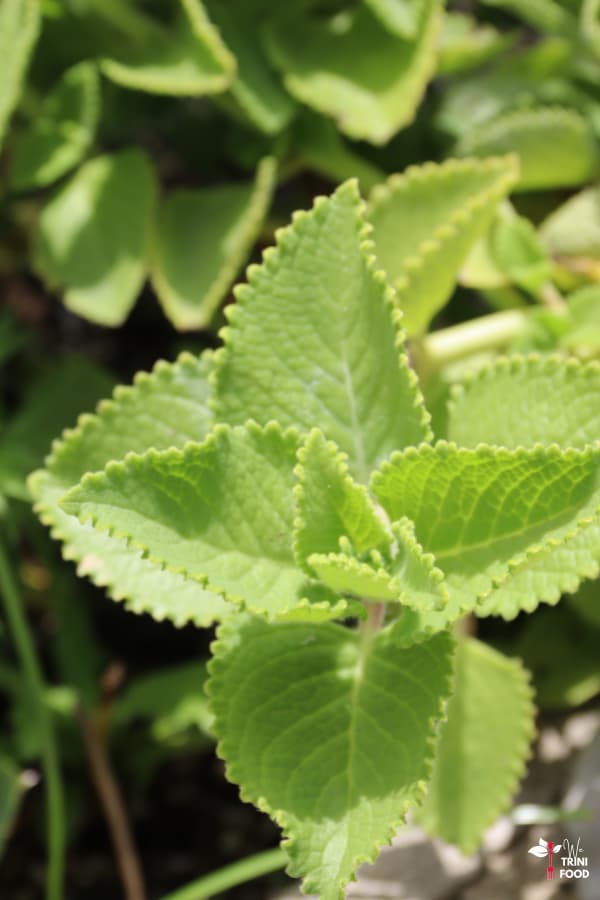
The plant is usually propagated by stem cuttings. Simply break off a section, plant in the soil and within a couple weeks, roots will develop. As long as the cutting is watered, the leaves will remain green, thick and fleshy.
No insects, fungi or bacteria seem to affect this plant so it does not require any spraying to keep it healthy. I actually use Spanish thyme as companion plants in my garden to keep wasps, aphids, other insects and even birds from attacking nearby vegetable plants. And I have also planted vulnerable seedlings like sweet peppers in between the foliage to keep them hidden from pests.
Purchase the plant
Live plants are available for purchase on Amazon.
Spanish thyme benefits
The essential oil of Spanish thyme contain carvacrol and thymol in high levels. Carvacrol – which is responsible for the oregano-like odor – is linked to antimicrobial, antioxidant, and anticancer properties according to this 2018 study. Thymol, responsible for the thyme-like scent, has shown antioxidant, anti-inflammatory, pain-relieving, antihyperlipidemic, antibacterial, antifungal, antiseptic and antitumor effects per this 2017 UAE study.
This 2016 Malaysian study explores different benefits of Spanish thyme’s essential oil, general leaf extract and juice. Table 4 of the study gives a great summary and shows the leaf extract has antibacterial, antifungal, antiviral, anti-tumor, wound healing, and anti-inflammatory benefits.
The study also noted the plant is traditionally used to treat respiratory ailments like influenza, cough, bronchitis; digestive issues like constipation and gas; and pain concerns like headaches. The leaf extract was even shown to be an antidote for scorpion venom.
A recent 2022 study highlighted the insecticidal activity of the essential oil on flies, mosquitoes and other insects.
Please note many of the research cited above is from laboratory studies and not clinical trials. So, it is unclear if the same effects from the lab will translate into improving our health.
Cuban oregano uses
Here are a couple recipes to use Cuban oregano or Spanish thyme in.
1. Caribbean green seasoning
Caribbean green seasoning is widely used in Caribbean cuisine as a meat marinade or as a seasoning in stews, soups, and more. It is often made with culantro (or shadow beni), garlic and other herbs like Spanish thyme, common thyme, pepper, ginger and more. Here is my recipe for Caribbean green seasoning.
2. Spanish thyme tea
Besides seasoning, the leaves can be used to make a strong, herbaceous tea. I usually add boiling water to the young leaves and allow them to steep for 10 minutes. After straining, I sometimes add a little honey and enjoy the tea warm. Check out my Cuban oregano tea recipe here.
3. Cuban oregano chutney
This recipe from Shireen uses about 20 leaves along with grated coconut, cumin seeds, tamarind, ginger, chili and more. Everything is ground in a blender and topped with heated mustard seeds and curry leaves. The chutney can be enjoyed with rice or as a spread with dosa.
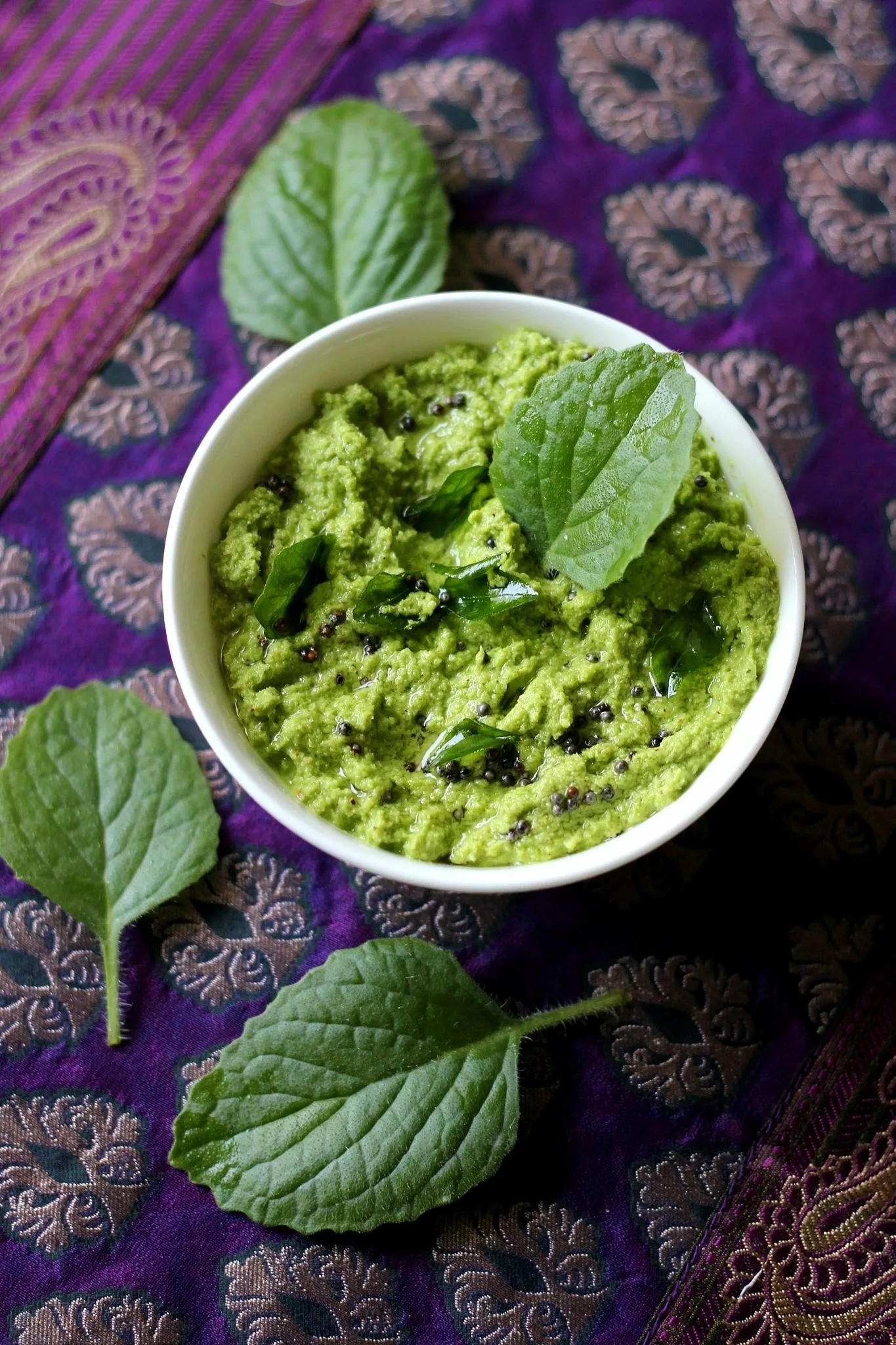
4. Mexican mint rice
Here’s another recipe with Indian flavors. This one is made by heating mustard seeds, gram and urad dal, curry leaves, chilis and onions until everything is tender. A cup of blended Spanish thyme leaves is then mixed in along with cooked white rice.
5. Indian mint fritters
Girija’s recipe involves deep frying Spanish thyme leaves that have been coated in a seasoned, chickpea flour batter. The seasonings for the batter are often chili powder, turmeric powder and salt.

How else do you use Spanish thyme or Cuban oregano? Let me know in the comments.

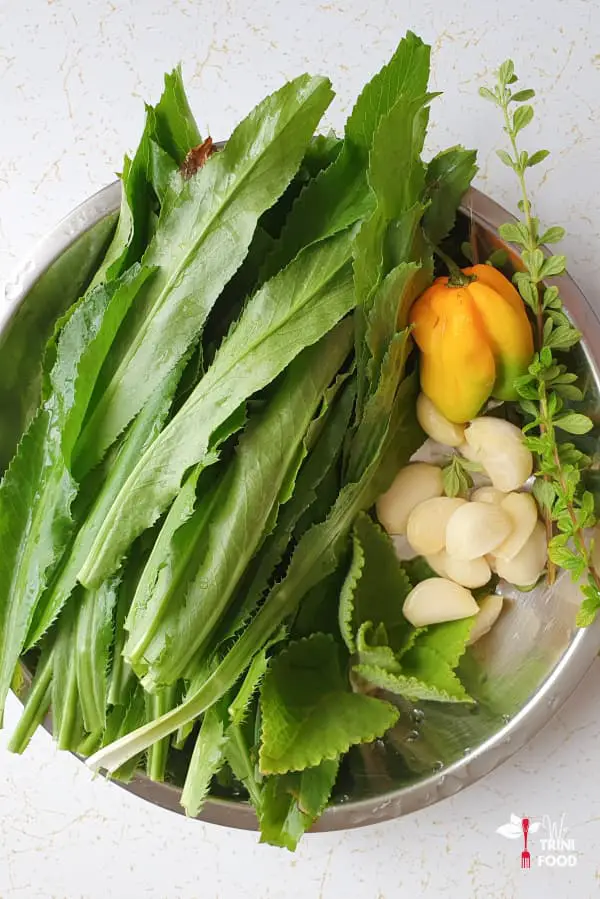
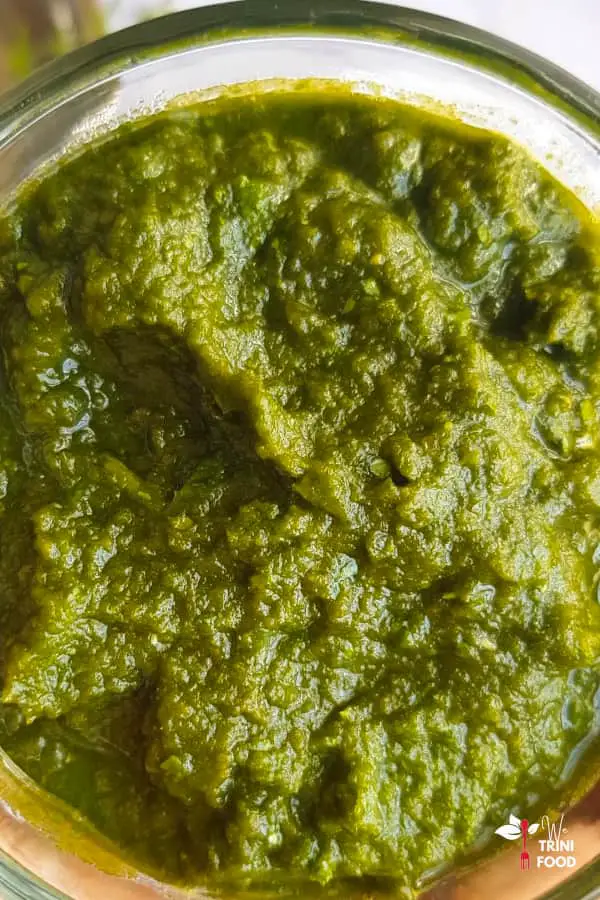
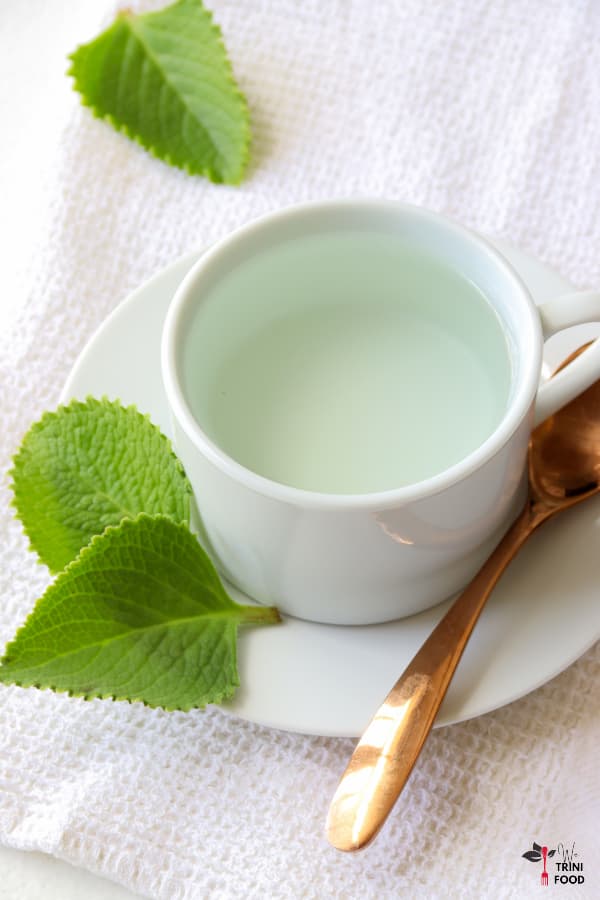
Great post! I just discovered this herb on St. Martin, where it’s called stingy thyme. Thanks for all the info on uses and recipe links